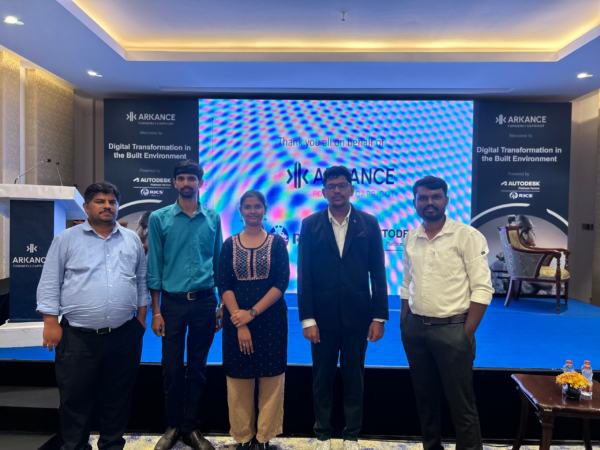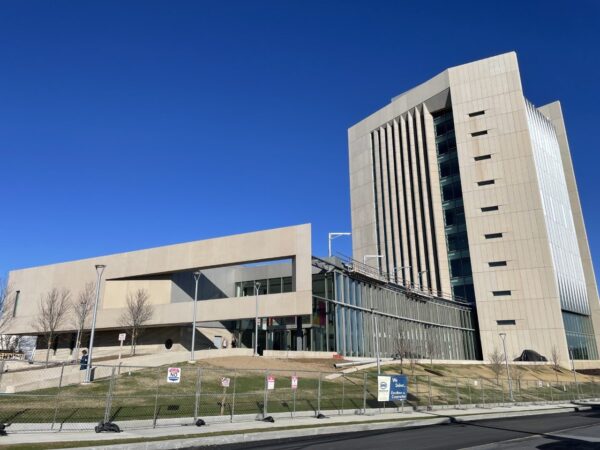
July 15, 2024 | Articles
Construction’s Digital Transformation & The Tools of Modern Project Management

Purnima Barjatya is an associate with Hill International’s Cost Consulting in the New Delhi, India, office. She has nearly a decade of experience in delivering cost and project management services to various projects across the Indian construction industry. Her experience includes work in the commercial, residential, industrial, and infrastructure sectors. Her expertise includes cost planning, value engineering, cost analysis, contract administration, project monitoring, and international methods of measurement.
What project you are working at present?
I am working as project lead for DLF Limited, India’s biggest real estate developer, for one of their most prestigious, ultra-luxury projects known as One Midtown. This is one of the best luxury housing projects in Moti Nagar in Northwest Delhi. The state-of-the-art facility is being developed on 6.7 acres and is planned to have 4 luxury residential towers with world-class amenities and services.
What are your unique contributions to your work/project?
I am preparing and monitoring project budgets to the tune of more than $180 million. Also, I have successfully carried out value engineering for the client leading to savings of $12 million.
Share with us your love of the built environment.
Civil engineers not only design engineering marvels, but also design things that are physically built. As a civil engineer, you get to see your designs come to life, from paper or software to the real deal. It’s very fulfilling knowing you took part in building something tangible that helps society as a whole. The built environment touches all aspects of our lives, encompassing the buildings we live in, the distribution systems that provide us with water and electricity, and the roads, bridges, and transportation systems we use to get from place to place.
How did you come to work for the construction industry?
Civil engineering has always been a passion, as it is a professional engineering disciple that deals with the design, construction, and maintenance of the physical and naturally built environment, including works like roads, bridges, canals, dams, and buildings. What lured me to this profession was the fact that it is centered on improving the lives of people.
By continuously developing and upgrading public services and facilities, this work not only gives the engineer a sense of responsibility towards humanity but brings forth a sense of satisfaction that the work carried out by the civil engineer contributes significantly to the wellbeing of the society. Civil engineers are an integral part of society: without them, we would have no roads, airports, buildings, dams, harbors, etc. I am a very dynamic individual and I welcome diversity with open arms. One of the things that made it easier for me to choose civil engineering as a profession is the fact that it is a very diverse profession and offers a wide range of activities across a variety of disciplines.
What are the challenges and benefits of working in the construction industry?
There are many challenges of working in the construction industry. For example, keeping up with compliance regulations, maximizing the constantly changing and evolving technologies and tools, and following various rules and regulations can all be a challenge. Scheduling can also be an issue–it’s not uncommon for even the most knowledgeable professionals to make mistakes when scheduling manually. Challenges that impact my work externally include the slow adoption of technology throughout the construction industry, which is a years-long problem. In addition, a surprisingly high percentage of problems within a project is directly related to the lack of and speed of communication between different teams and departments. Today, one of the biggest problems in the construction industry is the lack of a large, skilled workforce. And this challenge also gets worse with each year – with fewer and fewer young people interested in working in the construction industry and older employees being closer and closer to their retirement.
How do you think other women can be involved?
I see four primary ways the industry can involve more women: training, facilities, flexibility, and pay equality. Training will encourage women to participate in the construction industry and take control of their careers while also reducing a sense of vulnerability as more training will increase women’s’ confidence along with their knowledge and skillsets. Regarding facilities, something as simple as providing male and female washrooms on site and having the right size protective equipment can make big difference. Everyone should have the working conditions they need to do their jobs properly. Work/life balance is an ongoing issue in construction, as the travel and long hours involved in many construction roles mean workers struggle to find time for family and other parts of their lives. This can be discouraging. Both men and women with parental responsibilities need flexibility in their roles, and this can be hard to find in construction. Finally, equal pay for men and women in the field is a must.
Share

July 15, 2024 | Articles
Construction’s Digital Transformation & The Tools of Modern Project Management

July 10, 2024 | Articles
GC/CM at Post Falls: Managing Avista’s North Channel Dam Rehabilitation Project

June 23, 2024 | Articles
Irv Richter – An Innovator, A Pioneer, A Leader (1944 – 2024)

June 14, 2024 | Articles
Environment of Care Standards – Meeting the Challenge (Part Two)

June 13, 2024 | Articles
PMO for Public Transit Project Success: The Reopening of Philadelphia’s Franklin Square Station

June 7, 2024 | Articles

May 17, 2024 | Articles
Hill Interim Federal Market Sector Leader Jane Penny Receives Golden Eagle Award

April 11, 2024 | Articles
A Model Move: Managing Move-In at the Sylvia H. Rambo U.S. Courthouse